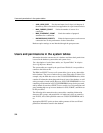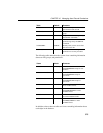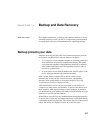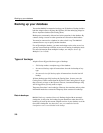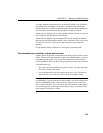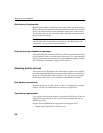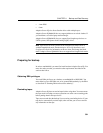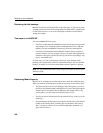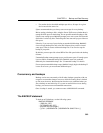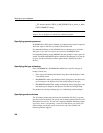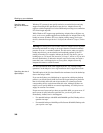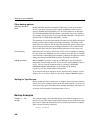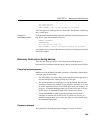
Backing up your database
382
Retaining old disk backups
BACKUP overwrites existing disk files of the same name. If you need to retain
a backup, when you create a new backup either use different file or path names
for the archive devices, or move the old backup to another location before
starting the backup.
Two ways to run BACKUP
You can run BACKUP in two ways:
• Attended. In attended mode,
BACKUP assumes that an operator is present,
and prompts you to mount the archive media when necessary. With this
method, you must run
BACKUP interactively from the command line.
• Unattended. In unattended mode,
BACKUP assumes that no operator is
present, and does not issue prompts. Instead, you must make appropriate
estimates of the space required, and set up your devices accordingly. Any
error is considered fatal.
In some cases, you can use third party software to create backups. Such
products can be particularly useful for unattended backups. See “Unattended
backup” for details if you want to run backups when no operator is present.
Note You can run BACKUP from a batch script or procedure, as well as from
Interactive SQL.
Estimating Media Capacity
Before you do a backup, be sure that your archive media has sufficient space.
When you estimate available space on disk or tape, keep in mind these rules:
• You need enough room for a full backup of the Catalog Store, as well as
the full or incremental backup of the IQ Store. If your Catalog Store holds
Adaptive Server Anywhere data in addition to the Adaptive Server IQ
system tables, you need room to back up this data as well.
• You do not need to include space for the transaction log, as this log is not
backed up.
• For tape backups, the first tape set you specify must be able to hold the full
backup of the Catalog Store, including any non-IQ data in the Catalog
Store. (A tape set consists of one or more backup tapes produced on a
given archive device.)



